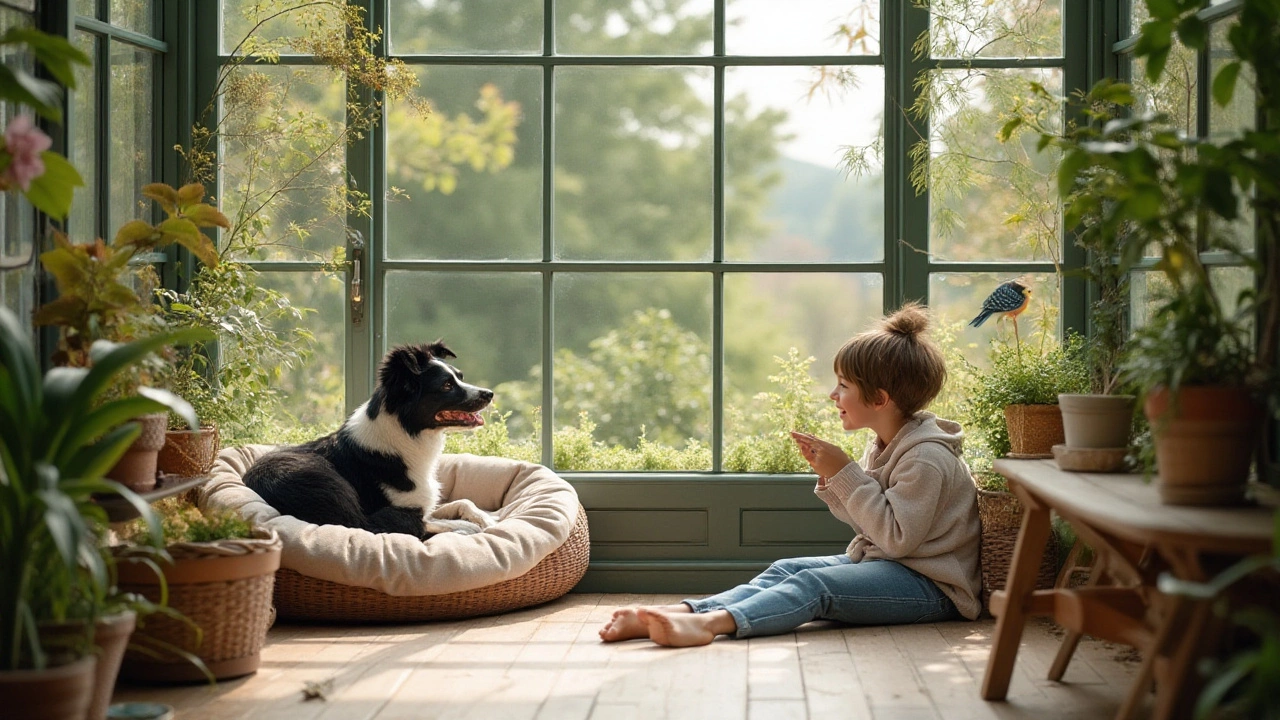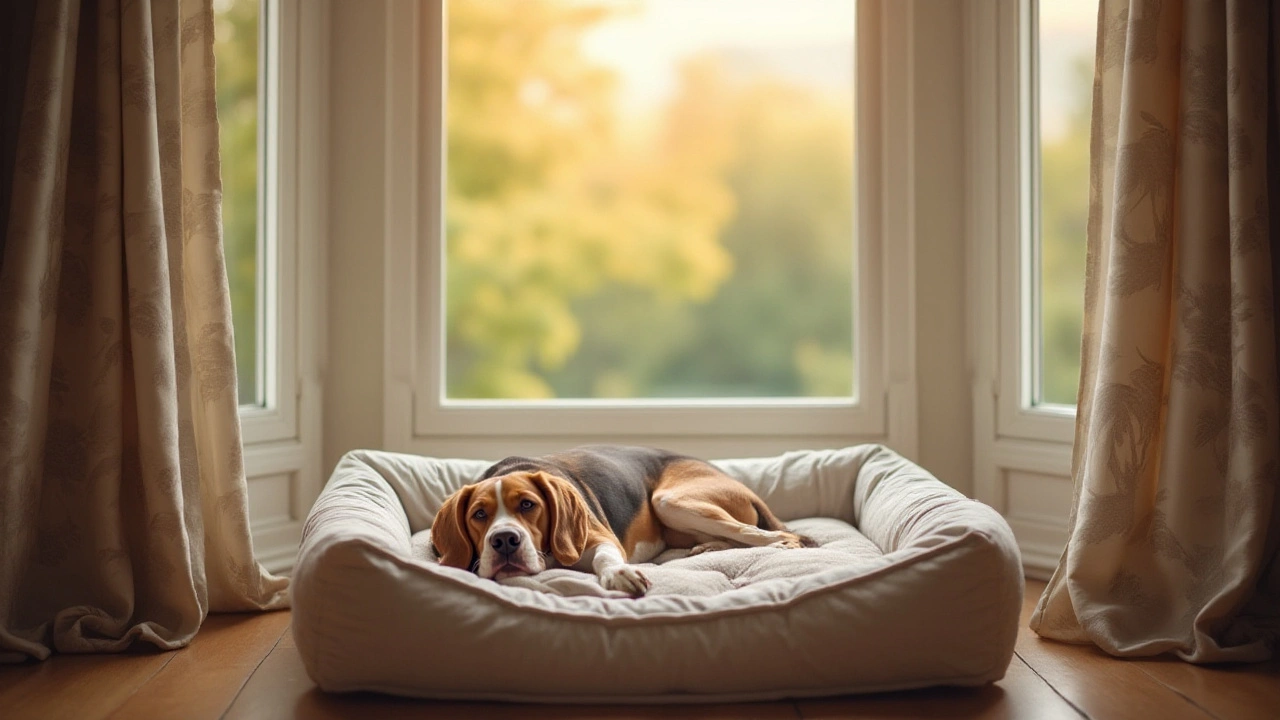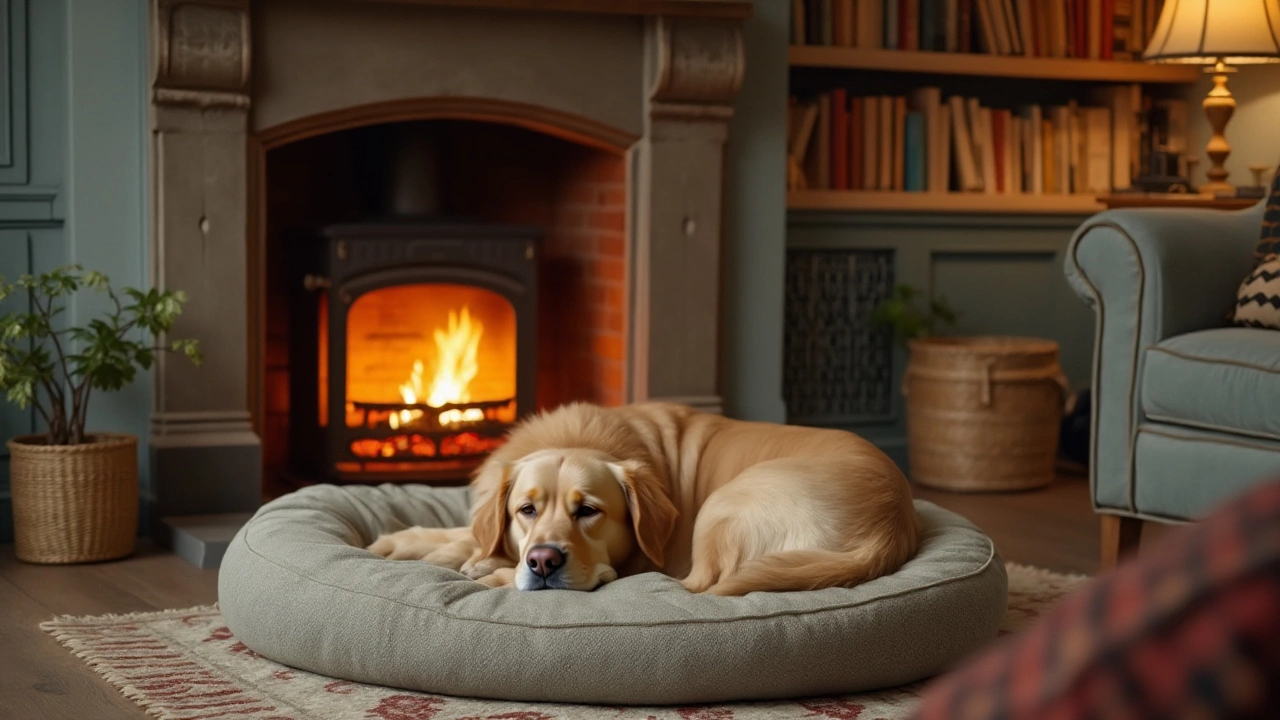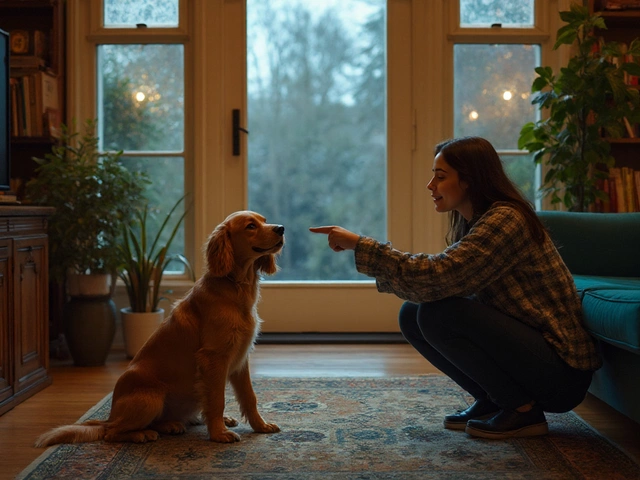Creating a cozy haven for your furry friend starts with choosing the right place for their bed. This isn't just about aesthetics; it's about providing a space where your dog can feel safe and relaxed. Understanding your dog's preferences and habits plays a key role in selecting the ideal spot.
Dogs, like people, appreciate comfortable sleeping arrangements. But where the bed is placed can significantly affect how restful their sleep is. From avoiding cold drafts to ensuring they're part of the family dynamics, there are several factors to take into account. Let's delve into some practical advice to help you decide where to put your dog's bed for their ultimate happiness.
- Understanding Your Dog's Needs
- Temperature and Environment
- Household Traffic and Privacy
- Adjusting for Multi-Pet Homes
Understanding Your Dog's Needs
Every dog is unique, possessing its own likes, dislikes, and quirks, much like humans. To find the perfect place for your dog's bed, it's important to understand these individual needs. Dogs seek comfort, security, and a sense of belonging. Where you place their bed can influence how they feel about their environment, so it’s crucial to observe their behavior and moods. Some dogs may prefer bustling areas where they can feel part of the family action, while others might enjoy a quiet corner where they can retreat from life's hustle and bustle.
Consider the breed, age, and health of your dog. Larger breeds might prefer more space, while smaller breeds often find comfort in cozier nooks. Older dogs or those with health issues such as arthritis often need more comfortable and easily accessible sleeping arrangements. Puppies, on the other hand, might require a location that can be easily observed to ensure they are safe and secure. Observing your dog’s choices will provide cues – watch where they naturally like to curl up or which spots they seem to avoid.
“The best place for a dog's bed is where they naturally gravitate. They choose their spots based on their needs for warmth, interaction, or solitude.” – Pet Behaviorist Suzie James
Behavior and Comfort
A dog’s behavior offers insights into their ideal sleeping area. Some dogs may follow their owners from room to room, indicating a desire for closeness. For such dogs, placing their dog sleeping area near family activity areas can satisfy their social needs. Others might seek out quieter spaces, away from noise. Understanding these preferences helps in deciding whether the bed should be in the living room or a quieter space like a study.Application of these observations goes hand in hand with trial and error. You might try different locations to see where your dog seems most at ease. While doing this, consider factors like temperature – a pet comfort essential during colder months. Warmth is important, but be cautious of placing the bed near heaters or in direct sunlight. These locations could become uncomfortable. Keeping a close eye on where your dog chooses to nap voluntarily can give you clues to where their ideal sleeping spot lies.

Temperature and Environment
Finding the perfect spot for your dog's bed means understanding how the temperature and environment affect their comfort. Dogs are sensitive creatures, experiencing heat and cold more intensely than we do due to their natural fur coat. The microclimate around them can also dictate how soundly and comfortably they sleep each night. It's crucial for pet owners to not only consider aesthetics and positioning but to focus on these environmental factors as well.
Begin by observing the natural temperature variances within your home throughout the day. Dogs have diverse needs; thick-furred breeds such as Huskies or Malamutes are more vulnerable to overheating if placed near heat sources like radiators or in direct sunlight. Meanwhile, short-haired or smaller breeds like Chihuahuas might appreciate the warmth nearby. Ensuring you're aware of these individual characteristics helps immensely in choosing the correct spot for your dog bed placement.
Avoid cold drafts from doors or windows as they can unsettle your pet's rest and potentially lead to health issues over time. On the other hand, areas with good airflow are often ideal, ensuring the space doesn't become too stifling. An interesting fact is that a steady room temperature between 20°C to 22°C (68°F to 72°F) tends to be optimal for most breeds. Regular monitoring and adjustment can provide a perfect resting area.
Cesar Millan, the renowned dog expert, once said, "A comfortable dog bed, set in a restful area, leads not only to a happy pet but to a harmonious home."
Look into using temperature-regulating pet mats or beds during extreme seasons, which some owners find particularly helpful. These are designed to maintain a constant temperature, offering your pet a cool respite in summer or extra warmth in winter. Prioritize their comfort, especially if you live in areas with harsh temperature extremes. Placement near an air conditioning vent during summer or a cozy corner in winter could be a game-changer in the quality of their rest.
Light and Noise Factors
While considering temperature, don't overlook the impact of light and noise on your dog's sleep. Some dogs enjoy a dark, quiet corner away from the bustling household chorus, while others find comfort in a gentle hum or being near human activities. Morning and evening light can affect their natural sleep cycle, so positioning the bed in a semi-lit area might be beneficial. Consider blackout curtains for spaces with excessive, intrusive light, allowing your pet a more undisturbed sleep pattern.
- Monitor local climate conditions in conjunction with in-home environments.
- Choose pet mats that suit your pet’s specific heat regulation needs.
- Review bed placement seasonally for optimal temperature conditions.
Tackling the challenge of fitting your pet's bed into a suitable environment is an often-overlooked task, but addressing it correctly ensures not just better sleep for your furry friend but enhances their overall well-being and happiness.

Household Traffic and Privacy
Choosing the perfect spot for your dog's bed often revolves around balancing foot traffic and providing a quiet retreat. Dogs have different needs when it comes to rest. Some adore being in the thick of things, relishing every opportunity to be around their humans. Others prefer a quieter, more secluded space where they can escape the hustle and bustle of household life. Having a precise understanding of your dog's personality can make a world of difference.
High-traffic areas, like the living room or kitchen, can be appealing because they keep your furry friend in the loop with the household happenings. Dog bed placement in such locations suits social dogs who dislike being left out. However, it's also essential to ensure their space is not too hectic. Too much stimulation might disrupt their sleep and could lead to stress and anxiety over time. Observing how your dog reacts to different levels of noise and activity can be a helpful guide.
On the flip side, privacy is crucial for puppies, senior dogs, or those who might be dealing with anxiety. Creating a serene and uninterrupted space in a less-busy corner of the house, like a bedroom or study, can help. Renowned animal behaviorist Dr. Sophia Yin once said,
"Dogs, just like people, need a sanctuary where they can retreat."Location plays a pivotal role in how much restful sleep they can get, which subsequently impacts their mood and health.
It's also worth considering how easily your pet can access their bed. Too much traffic near the bed's location can occasionally be intimidating, especially for shy or skittish dogs. If you're dealing with a multi-story home, placing a bed on each level might offer the comfort your pet needs without requiring too many steps. Utilize an
- approach when checking potential locations:
- Is the area noisy during peak family movement hours?
- Is there a way to maintain a reasonable temperature?
- Is it easy for the dog to get in and out without feeling disturbed?
- Does the spot offer a balance of social interaction and privacy?
Considering how these factors interact can lead to a harmonious balance between accessibility and tranquility. Making an informed choice by factoring in how your dog's bed placement fits into household dynamics could significantly enhance your dog's contentment and quality of life.

Adjusting for Multi-Pet Homes
Living with multiple pets means considering the dynamics of your furry household when deciding on the dog bed placement. In such environments, harmony is crucial, as it ensures all animals coexist peacefully. Each pet has its own personality, and understanding these is key to arranging the household to suit everyone's needs. Your dogs might prefer each other's company or require their own personal space, just like humans. Start by observing their interactions during different times of day. This will give you insight into the best ways to organize their sleeping spots. Some dogs might thrive in the hustle and bustle of social areas, while others relish quieter spots.
In homes with both dogs and cats, it's important to acknowledge that cats often have dominance over space and love to perch at higher levels. Therefore, maintaining balance between vertical and horizontal territories becomes essential. This means that while your dog's bed should be at an accessible and practical spot on the ground, strategic positioning ensures your cat can still peacefully enjoy its elevation. Placing your dog's bed away from traditional cat pathways can prevent friction and provide peace. Plus, you might consider adding more resources like beds throughout the house to give the option for solitude when needed.
Dogs are natural pack animals, so they may appreciate having their beds in close proximity to each other. However, make sure each dog bed location maintains enough distance to reduce conflict over personal space. It's worth noting that according to a study conducted by the University of Lincoln, pets often experience lesser anxiety when they have dedicated spaces that feel safe and they're able to retreat to those areas freely. Thus, balancing the proximity of shared spaces with individual sanctuaries is key.
"Animals value established territories," notes Dr. Roger Mugford, a respected animal psychologist. "Providing them with their dedicated zones helps reduce stress and promotes positive interactions among multi-pet households."
If space allows, having multiple beds might be the best solution. This accommodates varying preferences and ensures comfort for pets of all ages, sizes, and temperaments. Tailoring each sleeping area according to each pet's specific needs – such as orthopaedic support for older dogs or softer coral fleece for the young pups – enhances their comfort level. Remember, satisfied pets are those who feel secure and acknowledged within their living environment.







